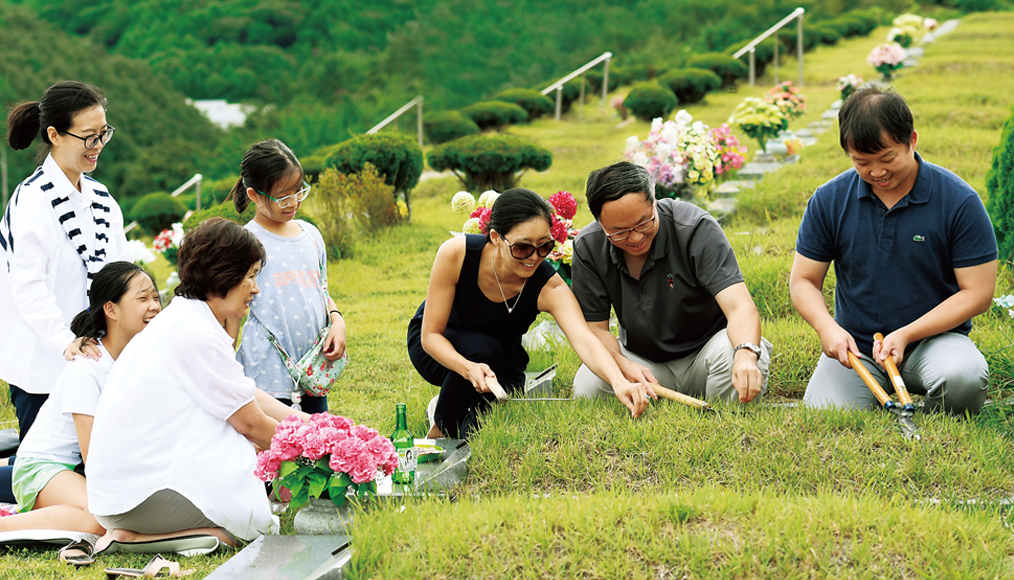
Chuseok, the harvest moon festival, is one of the biggest holidays in Korea. The name evokes nostalgia in every Korean, calling them home to gather on an autumn night when the bright full moon rises high over the hills. When Chuseok comes around, all the roads around Seoul and the roads and expressways leading to ancestral graveyards in the countryside and other big cities are jammed with cars as people head off to pay their respects to their ancestors and visit their hometowns. Visiting the ancestors’ graves on major holidays such as Chuseok and Hansik (the Cold Food Festival in early spring) to tend to their burial sites and perform memorial rites is called seongmyo. This custom has been practiced over the ages as burial grounds are perceived to be sacred places where one’s ancestors reside both in body and spirit.
Typically, Korean graves are located on a cleared piece of land on a mountain slope. The body of the dead is placed in a wooden coffin, which is buried deep in the ground. Earth is then piled on top to create a mound and grass is planted on it to prevent erosion. These uniquely Korean tombs require regular maintenance year-round. At Hansik, any damage to the tomb incurred between winter and spring is fixed and if the grass has worn thin it is resodded. Around cheoso, the 14th of the 24 solar terms in late August when the summer heat has begun to wane, the grass stops growing, signaling the time for it to be trimmed, weeds to be pulled out from the mound, and the surrounding area cleaned up. This task is called beolcho (“clearing out weeds”). It must be carried out in advance of Chuseok so the family can visit the grave and hold ancestral rites on that day. The graveside rites on Chuseok are especially important as this is when the newly harvested grains, the fruits of a year’s hard work, are offered to the ancestors.
With changing times, however, many people skip the visit to ancestral graves entirely or entrust the care and maintenance of the tombs to graveyard superintendents, taking off for a holiday elsewhere. These are times when cremation, columbariums and natural burials are growing as alternative options and funerary service companies tend to the graves. A letter posted online by a housewife gives some insight into how city dwellers today feel about the loss of connection to the land of their ancestors, and how they try to sustain their vestigial ties.
“It has been six years since my father-in-law passed away. Though he wanted to be buried in his hometown, his children, living in the city, thought it would be difficult to visit his grave if it was in the countryside and found an auspicious site in a graveyard close to the city. Since my father-in-law’s death, it has not been easy to visit my husband’s hometown. When we do take the time to visit, as we have no direct ties there anymore, we don’t feel the same about the place. Like kites with severed s, our memories float around lost in the sky. But just once every year, taking advantage of this less busy time, we go back to my husband’s hometown with my brother-in-law’s family to cut grass at the ancestral graves. In order to depart before the sun rises tomorrow morning, I’ve prepared ice, watermelon to eat and water to drink as we work, and I will brew drip coffee in the morning before we leave.”